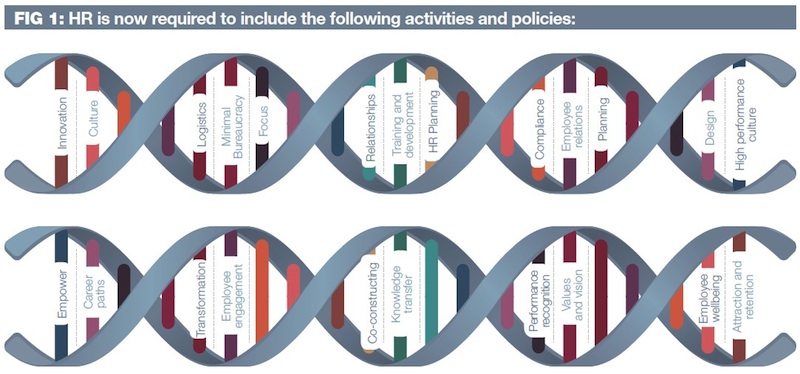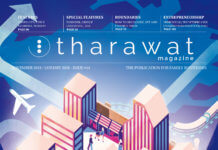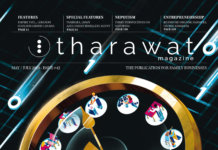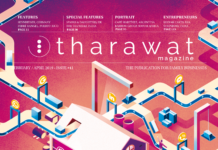In the past human resources managers and human capital strategies used to be seen as part of the administrative side of an organisation. Today, however, that perspective has shifted dramatically and it is supported by many that Human Capital Management is one of the most central considerations in corporate strategies. Shirley Zinn, CEO Shirley Zinn Consulting, explains what Human Capital Management used to be, what it is now, and what it should be in the future.
“The future of any organisation is dependent on the management of people” (Colin Coulson-Thomas: The Future of the Organisation, 1998)
Defining an effective human capital strategy is a complex process. It is a subject which constantly evolves and is studied and discussed by academics and commentators globally. Its definition and relationships with other aspects of business planning and strategy is not absolute and opinions vary between writers, researchers, and even HR professionals themselves. Strategic Human Capital Management can be regarded as a general approach to the strategic management of human resources in accordance with the intentions of the organisation on how to ensure current business success, and the future direction it wants to take. It is concerned with longer-term people issues and macro-concerns about structure, quality, culture, values, commitment, performance, and matching resources to future need within a fast-evolving business, economic and societal context (adapted from CIPD). Generally, organisations understand Human Capital Management (HCM) to signify the accepting and involving of the HR function such as recruiting, selecting, training and rewarding employees, as a strategic partner in the formulation and implementation of the company’s overall strategies. This places HCM at the heart of business success. Many organisations have still not realised how critical its staff is to its success. This has lead to human capital strategies being neglected. It often takes a crisis of the magnitude of the global economic recession, for businesses to understand that we are in a war for talent and to reposition and prioritise their human capital strategy.
The effectiveness of the Human Resource (HR) function is a key component of the human capital strategy in organisations. The HR function has evolved significantly over the past few decades; it used to be an administrative and transactional role, which included keeping records of staff, ensuring that employees are paid on time, and the hiring and firing of staff. It was rarely if ever, included in the business planning process and was regarded as a back-office function that was insignificant in achieving strategic goals.
Most organisations now realise, that if they are to be successful in the turbulent economic times we live in, there needs to be a fundamental shift in how we manage our human capital. After all, it is the people who generate the profits.
Contrary to its previous more administrative description the HR function is now required to include the following activities and policies (Figure 1):
• Co-constructing: Participating in the formulation of the business strategy and embedding the human capital strategy as a key success factor.
• Design: The way the HR value chain is designed can ensure a competitive edge in the finding, keeping, development of talent.
• HR planning: Ensuring that workforce projections, head count growth, and the skills mix enables the organisation to perform and achieve its business goals now and in future.
• Attraction and retention: Keeping key talent through a great employee value proposition. Many companies have put in place strategies around becoming a “great place to work in”.
• Planning: Recruitment and effective deployment of talent and succession planning for key roles.
• Training and development: Developing skills and investing in people to retain a competitive edge is critical to business success.
• Career paths: Career progression and advancement have to be systematic and well-defined to effectively deploy talent, retain it and meet individual aspirations in line with business needs.
• Performance recognition: Remuneration and recognition for high performance and sanction for poor performance are key factors.
• High-performance culture: There is a need to develop a sustainable culture of high performance which needs to be enabled by effective human engagement, processes, and systems.
• Values and vision: Organisations that are value-led and vision-driven are able to sustain themselves through long periods of stress and duress (Richard Barrett). Respect, integrity, honesty and transparency go a long way in engaging people.
• Employee engagement: Leadership has an important role to play in inspiring and motivating people and creating employee engagement and congruence with the vision and values of the organisation.
• Employee relations: There is a need to build healthy relationships between management and staff to ensure that people are focused on the execution of their roles. Moreover, it is imperative to engage meaningfully with trade unions where they are involved and avoid strikes and industrial action.
• Employee wellbeing: Implementing initiatives that take care of employee health so that they can outperform competitors.
• Transformation: The ability to embrace diversity and inclusive practices are key in a global workforce and the demographics across nationality, age, seniority, gender, language, religions, etc. will vary widely.
• Empower: Allow employees to make decisions by effective delegation and to take accountability for their actions.
• Compliance: Much of Human Capital Management is governed by international and local legislation. A key HR function is to ensure that there is compliance with laws and employment regulations and not put the employer at risk.
• Focus: With proper HR systems in place, senior management can focus on strategic aspects of the business and can build more nimble, and more responsive organisations.
• Innovation: We need to nurture innovation and creativity and enable our people to challenge conventional wisdom.
• Culture: A culture of delivery and execution needs to purposefully embedded and supported by an organisational design and structure.
• Minimal Bureaucracy: Policies, procedures, processes that support the high performance culture and strip out undue bureaucracy need to be developed and implemented.
• Knowledge transfer: Facilitating the sharing of knowledge across the workforce and communication, especially by leaders, is important.
• Logistics: Provide a physical environment that is conducive to the performance of all staff, including those with disabilities.
• Relationships: Fostering positive relationships across levels and functions (inter and intra-divisional relationships).
If you are responsible for the human capital in your organisation, your continual mission is to seek ways of improving the return-on-investment in the organisation’s human assets. However, the analogy of people being assets needs to be used with care in order to ensure that people are not construed as commodities: Employees are not numbers, they are people. Many programs and systems have to be put in place focussing on the knowledge, skills, and motivation of the individual performer as well as the team.
Employee engagement i.e. the battle for hearts, hands, and minds, is critical to business success. The Society of Human Resource Management states that employees spend more than 70% of their year at work. If that claim is true, then organisations and their leaders are challenged to create a more balanced life that is aligned with the long-term, sustainable needs of employees, the community in which they reside, and the networks essential to healthy communal living, as well as attending to the critical issues of organisational success and sustainability.
In conclusion, the world has experienced significant shifts over the past five years with the onset of the global economic recession and globalisation more generally. This requires that we reframe our approach to human capital quite fundamentally. In the new normal, if we are to be successful, we need to focus on:
• Developing synergistic, holistic, integrated human capital practices and providing solutions that are cost-effective.
• Benchmarking with role models and competitors so that we know how we are doing and where we need to improve.
• Measuring everything we do in Human Capital Management because “what gets measured, gets done”.
• Requisite systems need to be in place to enable efficient tracking and logging of data, reporting and monitoring, as well as quality assurance.
• Ensuring continued re-alignment with strategic business plans and direction.
To live up to new and old challenges in HCM, Human Resource professionals and line managers need to raise the bar on themselves and shift their behaviour. Their capabilities and competencies have to be continuously developed. Failing to recognise the importance and urgency of human capital strategies and management would be failing to understand that to create an effective organisation , you need effective people. “The key factor in determining the success of any organisation is its ability to use human talent” (Peter Cheese, et al: The Talent Powered Organisation, 2008).
Tharawat Magazine, Issue 14, 2012

















